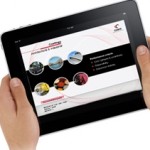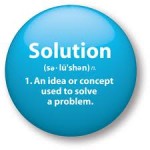Article first published as Instagram Helping Big Brands Filter, Share, and Promote Their Message on Technorati.
 One of the things I like about the Signal Conference, put on by Federated Media Group, is that they pack a whole lot of talent into a single day. But just 10 minutes with Kevin Systrom, CEO of Instagram was not enough this time. The iOS photo-sharing phenomenon was the first social app to have crossed a million users in just three months. Today, over one million users a week are adding the application.
One of the things I like about the Signal Conference, put on by Federated Media Group, is that they pack a whole lot of talent into a single day. But just 10 minutes with Kevin Systrom, CEO of Instagram was not enough this time. The iOS photo-sharing phenomenon was the first social app to have crossed a million users in just three months. Today, over one million users a week are adding the application.
In molecular terms, the atomic unit of Instagram is the “image.” So, it’s no accident that the success of Instagram truly came with the iPhone 4 launch. With photos as the base medium, the phone’s 2x screen and 5 mega-pixel input device enabled the masses to truly use the app the way it was designed. True to practice, Instagram was created with the intention for users to do four things:
- Image capture

- Image manipulation (“to make it look awesome,” as Kevin says)
- Syndication of the image through existing channels (like Facebook and Twitter)
- Inspire and enable two-way communication about it
27 million users later, it’s working. But what’s particularly interesting, if not somewhat unexpected, is how the product is beginning to affect brands and advertisers. This is what Kevin is particularly passionate about. He cites brands using Instagram as a social media marketing tool in three key ways:
Products
Burberry was one of the first brands to sign-up with Instagram. Their advanced, early-adopting social media has been able to attract over 200k followers to their branded Instagram website. Burberry uses the product as a way to show the products they build. So now, more than just tweeting about London fashion show, users are sharing real-time images of the event. Similarly, Burberry takes its own ads through the Instagram filter, to create uniquely engaging content that doesn’t feel like advertising. “It feels like entertainment,” says Kevin.
Other brands have used Instagram successfully, as well. Banana Republic is using the tool to promote its Mad Men jewelry collection. The campaign is seeing staggering results, as 25% of followers are engaging with their photos.
Events
 Events like the Grammys and Sundance Festival are using Instagram in creative ways. At the most recent Grammys, whole teams of people were deployed to take behind-the-scenes photos, creating an instant and retrospective way for viewers and readers to talk about people. Sundance took things a step further, crowd-sourcing followers to use the tool. The festival encouraged users to tag their Instagram photos “Sundance 2012,” as a sort of visual check-in. “That’s free advertising,” Kevin points-out.
Events like the Grammys and Sundance Festival are using Instagram in creative ways. At the most recent Grammys, whole teams of people were deployed to take behind-the-scenes photos, creating an instant and retrospective way for viewers and readers to talk about people. Sundance took things a step further, crowd-sourcing followers to use the tool. The festival encouraged users to tag their Instagram photos “Sundance 2012,” as a sort of visual check-in. “That’s free advertising,” Kevin points-out.
Campaigns
Tiffany’s came to Instagram and asked, “How can we tie your tool into a new campaign about love? The company asked people to take photos with the tool, instructing them to hashtag each “truelovepictures.” The result is a collection of user generated photos in a new web microsite that generates droves of traffic each day: Trueloveinpictures.
Brands like Nike and Warby Parker have established creative Instagram-driven campaigns, as well. Warby Parker took its fans on an “Insta-walk” where they posted photos of Warby Parker glasses. Certainly, the tool has grown beyond all expectation and continues to evolve. If we’d had only one more minute for Q&A at the Signal Conference, my question would have been: “Android? When?” The rest of the world is ready.



